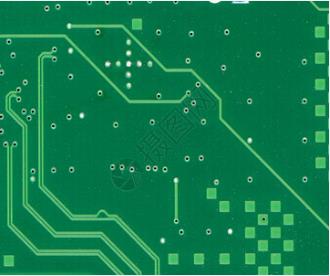China's electronic industry chain is becoming more and more complete, large in scale, and strong in supporting capabilities, and the PCB industry plays a key role in linking the whole electronic industry chain.
Printed Circuit Board ("PCB") is a bridge that carries electronic components and connects circuits. It refers to a printed circuit board that connects points and prints components on a common substrate according to a predetermined design. Its main The function is to connect various electronic components to a predetermined circuit and play a transmission role. PCB, as a key component of electronic products, is used in almost all electronic products. It is an indispensable electronic component in modern electronic information products and is known as the "mother of electronic products". The manufacturing quality of PCB does not directly affect the reliability of electronic products, but also affects the integrity of the signal transmission between the chip and the chip. The development level of its industry can reflect the development speed and technical level of a country or region's electronic information industry to a certain extent. .
The global PCB market presents the attributes of "cycle + growth", and the electronic trend of downstream terminals promotes the long-term growth of PCB space. On the one hand, as a basic electronic component, PCB usage continues to increase with the trend of electronicization of downstream terminals. On the other hand, PCB is affected by the macroeconomic demand for electronic products and fluctuates. With the transfer of the PCB industry, the size of the PCB market is constantly expanding. According to Prismark statistics, the global PCB industry market space is 61.34 billion U.S. dollars, and the compound growth rate of the industry is expected to be 4.3% in 2019-2024.
The important substrate of PCB is copper clad laminate. From the cost point of view, the important substrate copper clad laminate accounts for about 30%-40% of the entire PCB manufacturing.

The main raw materials of copper clad laminates are glass fiber cloth, wood pulp paper, copper foil, epoxy resin and other materials. Among them, copper foil is the main raw material for manufacturing copper clad laminates, accounting for 80% of the material. The copper clad laminate industry is an industry with a large capital demand and a relatively high degree of concentration.
According to Prismark's research data, the global CCL industry has a CR10 of 75% and a CR5 of 52%, with a high concentration. Among them, Shengyi Technology has a market share of 12%. The major companies in the industry have strong bargaining power, and The PCB industry downstream of the copper plate has a CR10 of 26%, which is a perfectly competitive industry. In recent years, the PCB industry has developed rapidly. Whether it is the number and scale of upstream service companies, timeliness of delivery or other supporting services, they have been able to meet the needs of the industry, and the upstream has formed a relatively concentrated and stable supply pattern.
The downstream application fields of PCB are relatively broad, and the industry has become more diversified in recent years. The product applications cover various fields such as communication electronics, consumer electronics, computers, automotive electronics, industrial control, medical equipment, national defense and aerospace. Among them, communications, automotive electronics and consumer electronics account for 60% of the total. The acceleration of the construction of 5G base stations will drive the rapid development of the PCB industry chain. The company's revenue in the PCB industry is mainly determined by downstream demand. For PCB manufacturers, their profit margins are not only related to downstream demand and upstream supply, but also closely related to their own product structure, production scale, yield, and production line automation level: The profit level of high-end PCB products such as HDI and flexible circuit boards is usually higher than that of traditional PCB products; large-scale production helps PCB manufacturers to dilute fixed costs and increase profit margins.
In addition, PCB manufacturers can increase per capita output and optimize profitability by improving the automation level of production lines.
The PCB industry is a key electronic basic industry. The complete industrial chain enables PCB companies to quickly purchase raw materials and quickly respond to customer needs, enabling companies to move forward steadily on a sound development track.
With the continuous advancement of "Made in China 2025", a number of global local companies have emerged in emerging markets such as the mobile Internet, the Internet of Things, big data, cloud computing, artificial intelligence, and driverless cars, serving as the supporting electronics manufacturing industry. Provide more development opportunities. With the acceleration of the 5G commercial era, the construction of network infrastructure such as base stations is accelerating. 5G communication equipment has a greater demand for communication materials, and major operators will invest more in 5G construction in the future, and communication PCBs will have a huge market in the future. Since 2016, thanks to the rising demand for consumer electronics, thanks to automotive electronics, the global PCB output value has increased year by year. China has gradually become the main production base of printed circuit boards in the world. According to Prismark's forecast, by 2022, China's PCB output value will exceed 40 billion US dollars. By 2024, the output value is expected to reach 43.8 billion US dollars.